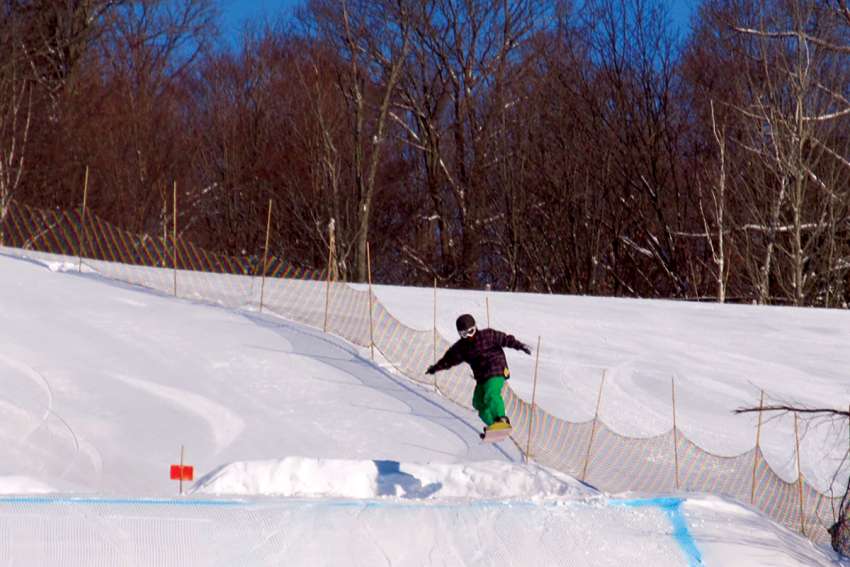The day was wonderful. The kids were full of happy energy on the bus. The weather was perfect with sun and warmer temperatures but no ice forming. Eliot’s friends had lessons opposite his, so I got to hang out one on one with him for more than half the day. And between helping kids find lost gear and get up from their own wipe-outs, I went up and down the ski hill thinking about how not to fall.
Snowboarding is strange because it relies on sideways momentum rather than forward and back. Where we are used to distributing weight and movement between two feet, snowboarding holds the two feet together. The whole body has to move — or fall — together. The last few winters, I could feel my fear of falling increasing alongside my age.
I can also feel my awareness of risk increasing as I get older. The boundless energy and bold confidence of my 20s has given way to practical conservation of resources and more measured risk assessment. This is both healthy and a loss. I sat quietly, alone on the chair lift, feeling the strength in my legs, anticipating the deep powder on the next run. I love the sidelong back and forth of the snowboard beneath my feet and my whole body following in each turn.
I felt the wind blow across my face as the lift neared the top, whispering something I forgot: I know how to fall. If it happens, I know how to get low to minimize injury. I ride with open hands that close instinctively to fists to protect my wrists. My basic workouts are strengthening my body, and I am attentive to fatigue. Before I take off, I choose runs with intention and can go very slowly in sections that are too icy or steep. I allow myself to slow to a controlled fall to avoid one that is more dangerous.
With delight, I discovered that I am not too old to snowboard — yet.
When I got home, I arrived home to a sick child who couldn’t sleep. She and I have been struggling to connect and more often than not, I do not know immediately how to help her. I made a choice to fall into bed beside her, and to fall into the rhythm of the prayers of my ancestors, fingers for beads, prayers for lullabies.
My prayer life is a constant haphazard collection of habits picked up here and there: prayers triggered bells and sirens and dish soap, silent contemplation in between mom and work duties, fragments of poetry and written prayers wedged in the pages of all my books, and others written into my mind and heart. I used to beat myself up for not being more consistent, more formatted, more anything than what I am, but I learned that there is no wrong way to pray.
These days, my most frequent prayers with words fall into grace:
Help.
I’m sorry.
I do not understand.
I do not know.
Show me.
Thank you.
For years, I have known that the prayers of my parents, my aunts and uncles, my grandparents and elders have carried me in a particularly powerful way. I think I am starting to understand why. They know how to fall into grace and thrust me into God’s hands.
Someday, I will retire my snowboard when the risks or reality of a fall remove the joy it brings. I will give her a worthy retirement then. For now, though, I am grateful for the way she floats me over the snow, reminding me that I can let myself fall — into snow and into grace.
(Perrault works in Catholic health care in Saskatoon and writes and speaks about faith. Her website is leahperrault.com)


